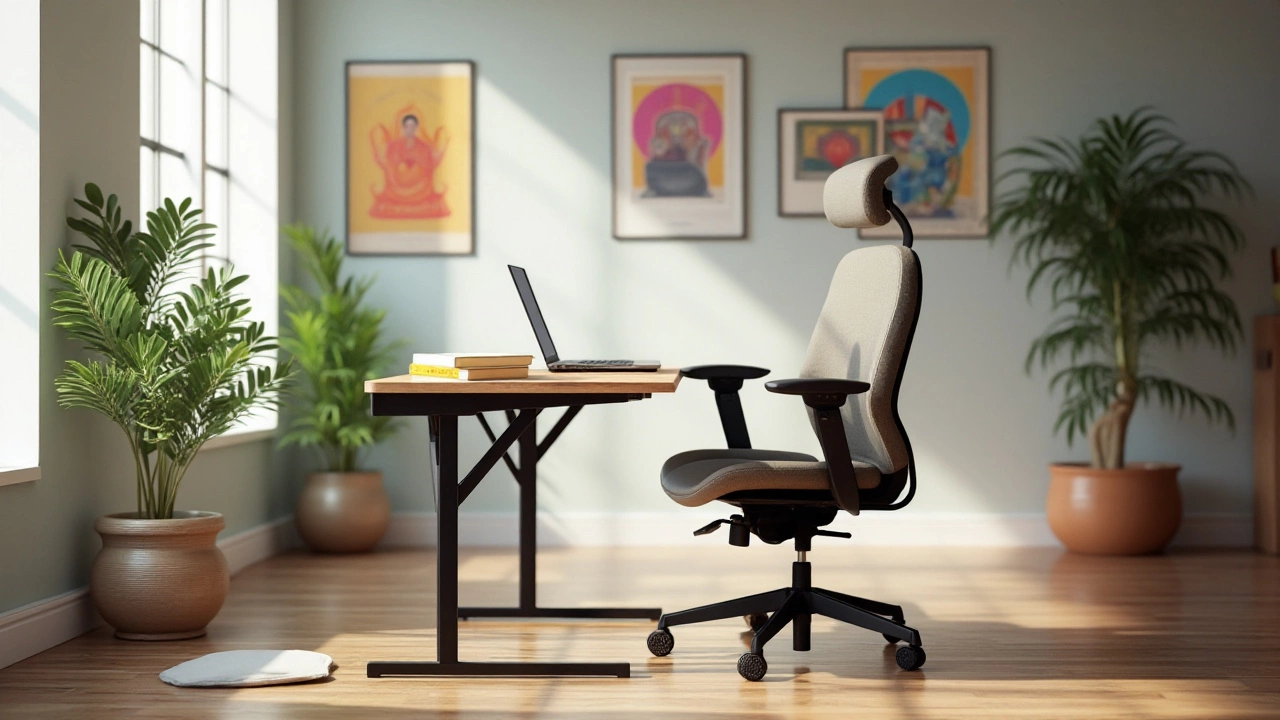Desk Chair Guide: Choose Comfort & Style for Your Workspace
Picking a desk chair isn’t just about looks. It’s about staying comfortable while you work, study, or game. A good chair can keep your back happy and your focus sharp, while a bad one leaves you sore after a few hours. Let’s break down what you need to know so you can get a chair that works for you.
What Makes a Good Desk Chair?
First off, check the basics: height adjustability, seat depth, and lumbar support. You should be able to raise or lower the seat so your feet rest flat on the floor and your knees form a 90‑degree angle. If the chair lets you tilt the back and lock it in a comfortable position, you’ll avoid slouching.
Next, think about the material. Mesh backs keep you cool, while padded seats give a softer feel. Look for breathable fabrics if you tend to sweat. The armrests should move up and down, and the pads should be thick enough to cushion but not so soft that you sink in.
Stability matters, too. A five‑point base with wheels that roll smoothly on your floor type (hardwood, carpet, or tile) helps you move without scratching the floor. The wheels should lock when you need to stay still.
How to Pick the Right Chair for Your Needs
Start by measuring your workspace. Leave at least 24‑inches behind the chair for easy movement. Then sit in the chair and test a few moves: reach for your desk, swivel, and lean back. If it feels natural, you’ve found a good match.
Consider how many hours you’ll spend in it. For full‑day use, lean toward chairs with strong lumbar support and adjustable tension on the tilt. If you only sit for short bursts, a basic ergonomic chair may be enough.
Budget is another factor. You can find solid chairs under $150, but premium models with advanced adjustments can cost $400 or more. Think of a chair as an investment in your health—spending a bit more can save you from back problems later.
Read reviews for real‑world feedback. Look for comments about durability, wobbliness, and how the seat feels after weeks of use. Brands that offer a warranty give you extra peace of mind.
Finally, test the chair in person if you can. Many stores let you try before you buy. If you’re shopping online, check the return policy to ensure you can send it back if it doesn’t fit.
Remember, the perfect desk chair balances comfort, adjustability, and style. With these tips, you’ll find a chair that keeps you productive and pain‑free throughout the day.
Best Chair for Sitting Long Hours: Your Back Will Thank You
Choosing the best chair for sitting long hours isn’t about looks—it’s about keeping your body comfortable and your mind focused. This article breaks down the key features that matter when you’re parked at your desk all day. You’ll get straightforward advice on what to look for, from lumbar support to seat cushioning. Expect real tips that go beyond the typical marketing fluff. Plus, there are practical adjustments you can use with any chair to boost comfort right now.
Office Chair vs. Desk Chair: Key Differences Explained
An office chair and a desk chair may seem interchangeable, but they serve distinct purposes in the workspace. Office chairs are designed with ergonomics in mind, offering support for longer hours, while desk chairs are often simpler, catering to shorter sitting times. This article explores their unique characteristics, highlighting aspects like adjustability and comfort. Understanding these differences can enhance your workspace setup for improved productivity and well-being.






